#Signal Hill National Historic Site
Video
Queen's Battery by Karen Chappell
#Signal Hill#Newfoundland#canada#Atlantic Canada#east coast#Avalon Peninsula#history#national historic site#NFLD#St. John's#queens battery#house#fence#stone#brick#green#grass#Cabot tower#scenery#scenic#Landscape#blue#sky#land#clouds#Canon EF 24-105mm f/4L IS USM#flickr
1 note
·
View note
Text

At Signal Hill on December 12, 1901, Guglielmo Marconi and his assistant, George Kemp, confirmed the reception of the first transatlantic radio signals. Signal Hill National Historic Site
1 note
·
View note
Text
Bulford Kiwi Restoration: Reviving an Historic Monument

A Symbolic Restoration
A piece of history etched into the Wiltshire landscape has been given a new lease of life thanks to a collaborative endeavor between the UK Defence Infrastructure Organisation (DIO), the New Zealand High Commission, and dedicated volunteers.
The historic 'Bulford Kiwi,' a monumental chalk carving, has been meticulously restored on Beacon Hill, overlooking the village of Bulford on Salisbury Plain.
A Soldier's Legacy in Chalk
The 'Bulford Kiwi' holds its origins in the aftermath of World War I, as New Zealand Expeditionary Force soldiers awaited their journey back home. Eager to leave their mark on the British countryside, these soldiers carved a striking kiwi, a symbol of New Zealand, into the chalky terrain of Beacon Hill.
A Joint Effort to Preserve History
The restoration project brought together the DIO, the New Zealand High Commission, local conservation groups, Landmarc, and enthusiastic volunteers from the 3rd (UK) Division Signal Regiment and Operation Nightingale.
To ensure the kiwi's historical significance endures, an RAF Chinook helicopter delivered an impressive 100 tonnes of chalk, meticulously arranged by the dedicated volunteers across the partnership groups. The site came alive with a traditional Waiata song and Kukuri dance.
A Connection with the 'Trench All Blacks'
As the Rugby World Cup saw the All Blacks prepare to face Italy, the DIO shed light on the historic link between the soldiers responsible for the 'Bulford Kiwi' and the 'Trench All Blacks.' This remarkable team of New Zealand soldiers won 'The Somme Cup,' a rugby division specially organized for those engaged in the war.
The very soldiers who created the iconic monument had stood shoulder to shoulder with the 'Trench All Blacks' during the Battle of Messines—a battle often hailed as one of the war's most successful.
A Monument of National and International Importance
Richard Osgood, DIO's senior archaeologist and co-founder of Operation Nightingale, highlighted the significance of the 'Bulford Kiwi.' He pointed out that, despite its creation in 1919, which makes it one of the youngest scheduled monuments, we cannot underestimate its national and international importance. Its ties to the New Zealand Armed Forces are profound, and the annual re-chalking serves as a poignant reminder of the sacrifices made during World War I.
From a Kiwi's Eye View
For Flight Lieutenant James Patrick, who piloted the Chinook helicopter during the restoration, it was a special task, given his participation in an exchange program from New Zealand. He shared his newfound perspective on the monument, stating,
"It’s only since I came over to the UK on the exchange program that I found out more about the Bulford Kiwi – I did know there was a chalked kiwi in the UK, but that was about it. I’ve flown over it a few times, which is interesting because it looks totally different from the air than it does from land."
Patrick also acknowledged the historical significance, saying,
"The fact that it was made by New Zealand soldiers waiting to go home after the First World War just makes it special. Then knowing I’m involved in restoring it, it’s just awesome, to be honest. We have these relationships, and things like this are perfect for us to keep up those bonds."
A Shared History, A Shared Mission
Shannon Austin, the New Zealand Deputy High Commissioner, expressed her delight at being part of the restoration project. She said,
"What a fantastic day it has been meeting and working with so many dedicated and enthusiastic volunteers. The Bulford Kiwi is well-loved and has a long history that links the UK and New Zealand.
It has been a real pleasure to be involved in helping to protect and restore this significant monument."
Sources: THX News, Ministry of Defence & Defence Infrastructure Organisation.
Read the full article
#BeaconHillChalkCarving#BulfordKiwiRestoration#DIOMonumentPreservation#KiwiCarvingSalisburyPlain#KiwiMonument#KiwiSymbolicChalkArt#NewZealandSoldiersMonument#RAFChinookHelicopterChalkDrop#TrenchAllBlacksConnection#WiltshireHeritageConservation#WorldWarIHistory
0 notes
Text
Visiting St. John's in Newfoundland
Newfoundland and Labrador is the easternmost Canadian province. It consists of the island of Newfoundland and the continental region of Labrador. St. John’s is the capital of Newfoundland. The city lies on hillsides overlooking one of the world’s finest natural harbors.
Signal Hill National Historic Site overlooks the entrance to the harbor. At the Visitor Centre, you can find out about the…
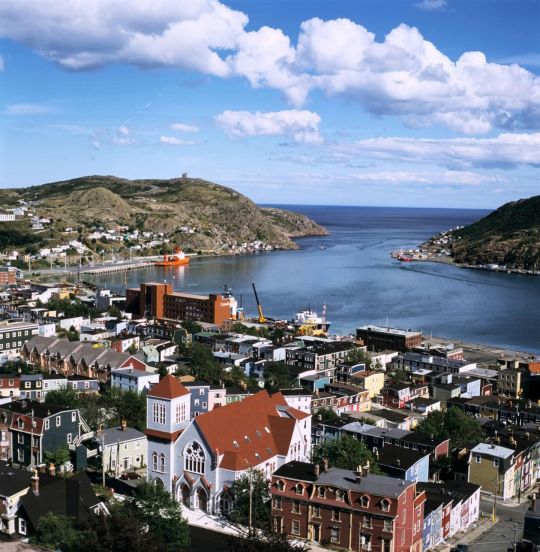
View On WordPress
0 notes
Text
Floodlights shining into homes of quiet Newfoundland neighbourhood suddenly shut off
Residents of a historic fishing neighbourhood in St. John's are cautiously relieved after a pair of floodlights that had been shining into homes since last May suddenly shut off.
Outer Battery resident Chris Brookes says the lights mounted on a shed owned by Colin Way went off at about 9:30 p.m. on Thursday.
Brookes said in an interview that he and his neighbours have no idea why the lights went off -- or if they'll stay off -- but he said he nonetheless had a restful sleep in the newfound darkness.
People in the Outer Battery have organized petitions and demonstrations against the lights, saying they interrupt residents' sleep and wreak havoc on their mental health.
Last week, a man was arrested in the neighbourhood for allegedly trying to damage the powerful lights, which were visible from across the city's harbour and from parts of downtown.
Earlier this month, the St. John's city council rejected a motion seeking a "nuisance lighting" bylaw, though a few councillors have urged Way to remove the lights.
Court documents show Way was charged earlier this year with one count of extortion and two counts of mischief by interfering with the use of property.
His lawyer, Bob Buckingham, says one mischief charge is related to the lights, and the others are related to other disputes in the same neighbourhood.
Way has declined to comment as the matter is before the courts, and Buckingham did not respond to a request for comment about the lights shutting off.
The Outer Battery neighbourhood is perched in a cliff face near the entrance to the St. John's harbour, and its colourful homes and fishing stages are often featured in the city's tourism ads.
The neighbourhood's main road leads to the start of a popular hiking trail that climbs around the back of Signal Hill, a national historic site.
This report by The Canadian Press was first published Jan. 27, 2022.
from CTV News - Atlantic https://ift.tt/BEboNO3
0 notes
Text
LOTD: Ghazaouet
~sorry for delay - meant for December 19th, 2022~
(from: http://www.ibiblio.org/lighthouse/dza.htm)
Ghazaouet (Nemours)
1868. Active; focal plane 92 m (302 ft); three white flashes every 15 s. 15 m (49 ft) round cylindrical tower rising from the center of a 1-story keeper's house. Entire building painted white. A photo is at below, Forand has a historic postcard view, and Google has a satellite view. This is the landfall light for Ghazaouet. Located atop a steep hill at the southwestern corner of the harbor. Site open, tower closed. ARLHS ALG-038; Admiralty E6720; NGA 22700.
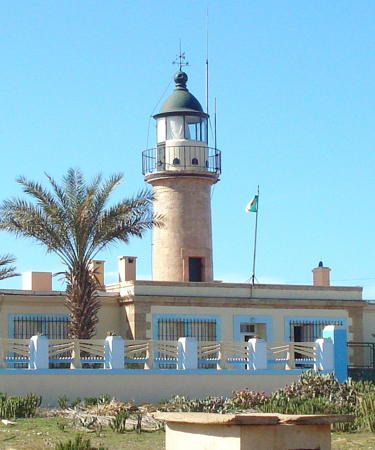
(photo found here; ©National Maritime Signaling Office (ONSM))
0 notes
Photo

Our trail walk on Signal Hill National Historic Site was was challenging at times (just don’t look down) but so worth the care and effort. The views out to the ocean and back into St John’s Harbour are spectacular. Carl wisely recommended we start at the top and work our way down, taking the trail in one direction only. Wise. #eastcoasttrip #nfld #signalhillbistorocsite (at Signal Hill) https://www.instagram.com/p/Ceav00Fu5LB/?igshid=NGJjMDIxMWI=
0 notes
Text
Yugoslavia Express
in a discussion with the photographer Roberto Conte, who discovered the modernism of Yugoslavia during his 9000 km photo trip.

Portrait Photo © Melania Avanzato
Roberto, why is an Italian, Western guy interested in Yugoslavia National Liberation struggle monuments from the WWII?
As an architecture photographer I work a lot with the post-war modernist architecture. I soon realized that a former neighbor nation of my country was literally disseminated by very interesting structures, rather expressionist but with a more modern appeal, with some extremely interesting solutions or design proposals with so many names that would deserved to be known more and that is the worthy purpose of many publications and exhibitions like the project organized by Architectuul. I didn't know much about Yugoslavia in general, despite the geographical proximity.

Monument to the Uprising of the People of Banija and Kordun (1971-1981) in Petrova Gora, Croatia by Berislav Šerbetić | Photo © Roberto Conte
My first trip to Belgrade was in 2015, followed by a big tour in 2017. One thing, that impressed me very much, is the locations of most of memorials and monuments strictly tied to the places were important and often painful historical events took places and not just a way to celebrate those people from the distance, like in the main cities itself. It's really a strong connection with the genius loci, the spirit of the place, and that gives a totally different read to these monuments and, of course, a totally different approach about the preservation of them.

Korčanica Memorial Complex (1975-79) by Ljubomir Denković on Grmeč mountain in Bosnia and Herzegovina | Photo © Roberto Conte
For example, just to mention two of the most famous spomeniks, I would like to mention the monuments in Petrova Gora, Croatia, and in Grmeč, Bosnia and Herzegovina. They both remember episodes of resistance dating back to WWII and located in the very places where things happened, and that gives a lot to them. The first is located on a hill and the surreal silence of the area is just broken by the low buzz of the repeaters/signal amplifiers put on the top of it. The second lies literally in the middle of the forest, in this case with the only buzz of mosquitos. As a person interested in the topics architecture, memory and time it's strange to see them.
On your trip map are also many other sites, not only monuments, how did the research started and what was the context of your research?
My very first trip was in Belgrade, were I explored the city a lot with the focus on the suburbs. I was totally surprised to see the Genex Tower as well as the whole New Belgrade, but also the Rudo Buildings, the now famous Toblerone in Karaburma and so many more. Despite the conditions of some of them, while some are in way better shape that many public housing complexes in Italy, I realized that in those years there was a genuine push in providing a real and modern home to many people that were moving to a fast growing city on a scale that I had never seen before.

Konjarnik neighborhood (1972-75), New Belgrade | Photo © Roberto Conte
On top of that, many buildings related to leisure activities, such as the 25 May Sport Complex, the Museum of Contemporary Art, the Aeronautical Museum or the Pionir Sport Complex were designed in a very innovative way and a complementary feature in this idea of modern city and modern urban citizen. After that trip I wanted to discover more, therefor I started to research and read more where I broadened my interest also to the memorials for the National liberation struggle of the WWII.
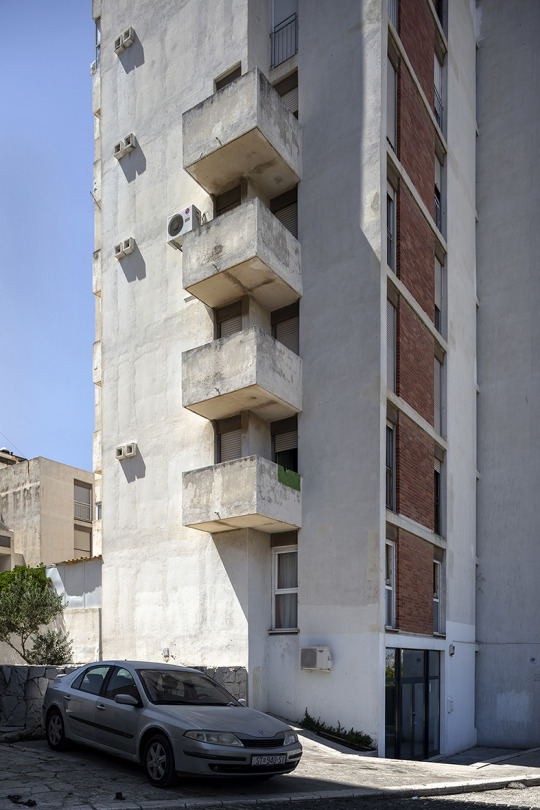
Residential building in Split by Dinko Kovačić | Photo © Roberto Conte
Without the need to gather the material for a specific publication or a pre-determined editorial project I was free to move as much as I wanted so I started to scout the buildings I was more interested to reading some books as Modernism In-Between, checked online databases as Architectuul or the Spomenik Database as well as scouting sites using satellite imagery.

Student Dormitory Goče Delčev by Georgi Konstantinovski in Skopje, Northern Macedonia | Photo © Roberto Conte
We are talking also about the unity in no border’s Europe but during your trip you have to cross many borders?
I travelled for about 9,000 km, crossing each single republic that once formed Yugoslavia, but whose current divisions were pretty much shown by the 15-border crossing I had to queue, and in some cases I had some not kind inspections and questions. Of course I realized the clear differences from some place to another, but at the same time my trip was organized following a common line and I often checked architectures made by the same people but now located in different nations, in many cases neglected, when not even destroyed, like for example the monument in Knin.
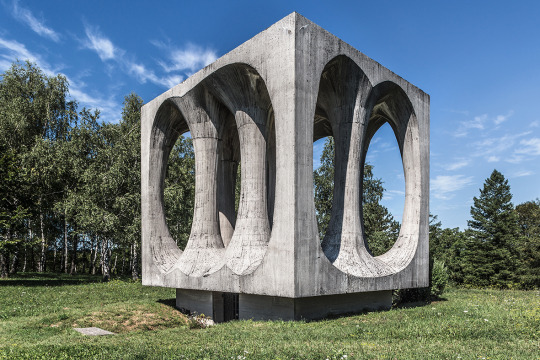
The monument to the National People's Struggle (1964-65) by Janez Lenassi and Siva Baraga in Ilirska Bistrica. | Photo © Roberto Conte
To be honest it was a very weird feeling, as an Italian born in 1980 I remember very well the borders inside the European Union and I am glad to be able to travel from one country to another, on the opposite, a country that was united as Yugoslavia is now so much divided, not only by state borders but sometimes also by ethnic differences inside the same republics.
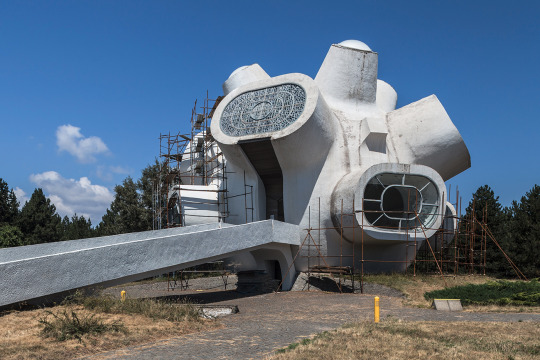
Makedonium, also known as the Monument to the Ilinden Uprising (1973-74) designed by Jordan and Iskra Grabuloska. | Photo © Roberto Conte
But in one leg of my trip, between the incredible memorial complex of Kadinjaća in Serbia and the Bratunac spomenik in Bosnia and Herzegovina, I crossed a border on the river Drina. It was a bit strange to see two fishermen right in the middle of the river, right in the very same waters and immersed in the very same landscape, but ideally located in two different countries.
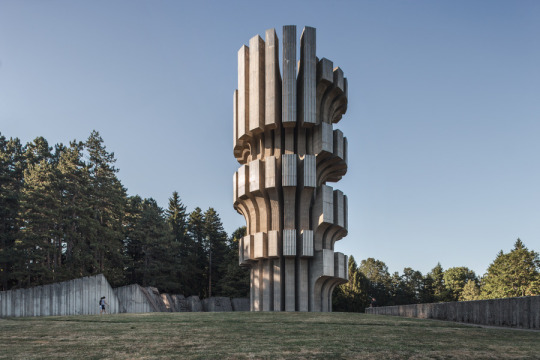
Monument to the Revolution (1969-72) by Dušan Džamonja, at the Kozara mountain, Bosnia and Herzegovina. | Photo © Roberto Conte
Did you have some other encounters?
Beside some recent and pretty ridiculous revival in Italy we have quite a detached relation with our flag, mainly used only for soccer events, and the need of highlighting our ethnical identity. That's also why I found it rather interesting what happened to me between Montenegro and Kosovo. I was at the gas station in Rožaje, Montenegro, waiting for my tank to be filled. Then I heard the horns of a column of cars celebrating a wedding (as we also do quite often in Italy), but the thing is that on the first car there was a huge Serbian flag waving proudly.
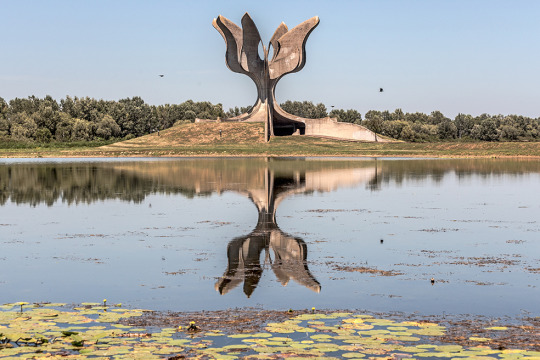
The Jasenovac Monument by Bogdan Bogdanović is devoted to the victims of the Ustasha genocide during World War II. | Photo © Roberto Conte
I found it interesting that a micro-social event, such as a wedding, was considered a good opportunity to wave a flag, moreover considering that these people living in Montenegro was considering themselves more connected to another country, in this case Serbia. Then I crossed the mountain and the border with Kosovo and when I was approaching to the city of Peje I've seen another horning car parade, another wedding, with another flag! And, once again, the flag was about the one of another, Albania. I found these episode quite revealing of a probably diffused attitude.
---
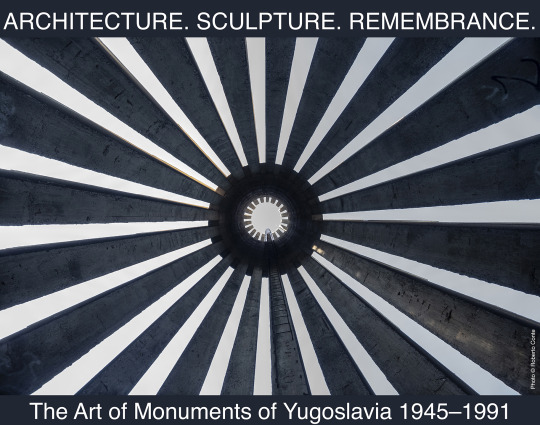
Architecture. Sculpture. Remembrance. The Art of Monuments of Yugoslavia 1945–1991.
Curators: Boštjan Bugarič, Kristina Dešman, Maja Ivanič, Špela Kuhar, Eva Mavsar, Špela Nardoni Kovač, Damjana Zaviršek Hudnik
Producer: DESSA gallery Židovska steza 4, Ljubljana, Slovenija
Organiser: DESSA gallery, ab_Arhitektov bilten, DAL, Architectuul
Mediapartner: Architectuul
***
Also read interviews in DOMUS, ÉPÍTÉSZFORUM and WEARCH
23 notes
·
View notes
Text
FROM UP ON POPPY HILL - THE STRUGGLE OF YOUNG GENERATION
New Post has been published on http://www.whatsupkpop.com/from-up-on-poppy-hill-the-struggle-of-young-generation/
FROM UP ON POPPY HILL - THE STRUGGLE OF YOUNG GENERATION
FROM UP ON POPPY HILL – THE STRUGGLE OF YOUNG GENERATION
Link Video:
youtube
As a film from the famous Ghibli production studio, “From Up on Poppy Hill” must be the best choice for those who are looking for a beautiful movie with both photo and content.
The love of school age is always a topic that makes them flutter when turning on the screen. “From Up on Poppy Hill” a rare Ghibli work on the subject. Directed by Miyazaki Gorō, son of legendary filmmaker Miyazaki Hayao. The main theme of the film is the love between Umi and Shun, a love that is both beautiful and complex.
The journey to light up “From up on Poppy hill”
From the beginning, this was a huge challenge for Miyazaki Goro, the wounded son who suffered an invisible pressure from his father, Miyazaki Hayao, who brought his life to the works. associated with our childhoods such as: Spirited Away, Howl’s moving castle, My neighbor Totoro, … Everyone expected that he was “the second Hayao”, and that expectation overcame on his shoulder a huge burden. Until his debut Tales from Earthsea was released to the public, despite being well-received and successful in terms of sales, it was a failure when the work received a lot of words. Disparaging comes from critics. And when he decided to do his second animation, but this time he was making the movie with his father, Miyazaki Hayao. This unique father-son combination led to the birth of one of the Ghibli works that I consider to be worthy of viewing, From up on the poppy hill.
This is the highest-grossing Japanese film of 2011 with the proceeds of 4.46 billions yen.If you haven’t seen From Up on Poppy Hill, enjoy the movie now. If you have seen this movie or don’t care about the spoiler, Let’s start now.
Main content
Set in 1963, in the port city of Yokohama, near Tokyo. The drama revolves around 2 main characters Umi and Shun. Umi is a 16 years old girl, energetic and courageous. She lives with her grandmother and two children in the family building, an old hospital that has been renovated to become a hostel for several girls. Umi’s daily jobs are cooking, cleaning, looking after the children and running the building while her mother is in America. The building is located on Kokuriko Hill. Every day, to commemorate her late father, who was a captain who died in the Korean War, Every morning she pulls colored flags that carry the message of asking for a safe journey for each ship.
Kazama Shun – a male student at the same school as Umi, is seen as the hero by a stunt performance to attract interest in the school newspaper – the club he joined after school. Wanting to get Shun’s signature, Sora – Umi’s sister asked her sister to come to the Quartier Latin. It is a very old building and is also the site of historical events and full of club memories. Here, Umi watched Shun and his friends devote themselves to keeping the building in danger of being dismantled. Realizing the sagging, old building of the building, Umi came up with an initiative to call the girls to come clean and renew it together.
They gradually became close to helping each other in everything. Then one day in a meeting at the house on the top of the hill, they accidentally discovered they have the same bloodline. When Shun avoided Umi, after demanding, Umi also discovered that the two were siblings.
They decided to hide their feelings and continue to be friends, and then one day, when the sun was still shining in the green bushes, Umi’s mother returned. It was also when Ryoko revealed that Shun’s biological father was Tachibana Hiroshi – the second man in the photo. In 1945, Tachibana died in a shipwreck accident. Shun’s mother passed away after giving birth to him, and relatives all died during the US atomic bombing on Nagasaki. Ryoko was unable to adopt Shun because she was pregnant with Umi, and was currently a medical student. Yūichirō issued a birth certificate for Shun in his name so that he would not have to become an orphan in the tumultuous post-war years that followed. Shun was eventually adopted by the Kazama couple. After being verified by Captain Yoshio, they rejoiced … not only because from now on being together and not worrying anymore …
The film’s success is not only based on the content, but also on the profound meaning that is meticulously incorporated in the movie
Image of dynamic and enthusiastic young people
The fact that the Quartier Latin was about to be dismantled at the behest of the district president was a challenge for the students living in the clubs in this building. Young students who are still day and night diligently devote their youth to research projects, they learn and cultivate everything outside of school, they do not hesitate to choose the difficult path of resisting directives to pursuing what they think is right.
They are willing to devote all their energies to renovating the building, which is not an individual’s work but a collective work of a team with so many enthusiastic people working. They try to the last minute, with only a little hope, the students here still make efforts to create opportunities, not easily surrendered. The trio of Umi, Shun, and Mizunuma together went to Tokyo to meet the chairman, waited patiently and bravely asked the president to visit the building before executing his dismantling instructions.
Young people working together to save the club can be a metaphor for the country’s rebirth. Together With other students, they are the embodiment of the future Japan, enthusiasm and determination, enthusiasm and optimism, passionate love and foolish youthful aspirations. touched and inspired those of the same generation. The film recreates the spirit of a time that helped that generation to rise up to revive the country, heal the wounds of war in the past, protect and preserve traditional values.
“From Up on Poppy Hill” can be said to be one of the most “Japanese” films of the Ghibli studio.Not only because the port area’s street space is faithfully reproduced in every small detail/, but also because of the strong and resilient spirit hidden in the characters’ personalities. They embody the country with determination, youthful enthusiasm and optimism for the future.
History lessons are appreciated without being cliché
Every effort comes from the thought: “… There will be no future for those who always talk about the future but forget the past …” that Shun raised in an argument between students. One detail I really like in the movie is the image of everyone singing solemnly and singing the national anthem of Japan. Never before has the atmosphere of national pride exploded so deeply, it crept into the consciousness of each student. Everything they are fighting for seems to be for the noble purpose of preserving and promoting historical and cultural values.
“Eliminating the old means erasing the memory of the past”
Actually, this statement by Shun is very correct. Always remember that history is the connection between the future and the past, there is the past, the present, and the present, the future. Thanks to the cultural identities, customs, monuments, and historical records, we can look back on our own country’s past and take it as a lesson to rise later.
Even the girls who do not join the club in the building, still spend time, effort and enthusiasm to renovate it, to give the Quartier Latin a new interface, with the desire for prices. Historical values are preserved.
The story of a group of young people fighting together to protect the old clubhouse building /with sacred memories of generations of seniors is a metaphor for Japan in its renovation towards development. /Still fighting to preserve precious traditional values. /Through these activities, they met and gradually a love between them began to arise …
The pure love of the young couple
Actually, Shun still notices and responds to the signals that Umi sends to her father every day, but because her garden is out of view, Umi has not noticed it for a long time. The author of the poem about the girl pulling the flag on the top of the hill is also written by Shun for Umi. We can feel the sincerity and very cute before the subtle vibrations integrated. The scene of Umi holding his hand during the show, the scene of Shun passing Umi down the hill to buy some evening preparations, the scene where the two of them go home together and discuss the upcoming exam, or simply keep quiet and intently together. After completing the school newspaper, all the videos are lovely and gentle.
“I like you, Shun, even though we are bloodline, even if you are my brother, my feelings won’t change” Umi’s words in the movie.
Love is like a Rose, sometimes sleep quietly, like Umi once buried in her heart … there is also a compromise between the pain, so go on or stop … /maybe expect peace , when the waves are quiet, the sea is together …/ and sometimes simple, reunited after days away. /Far away from war, distant because of obstacles, distant because of painful feelings … /but in the end, it will be as sweet as a child’s sleep, still meeting.
Family affection is always warm
Umi’s memories of her father are still standing, as evidenced by the flags she sends every day to inform her father at sea about the way back home. She still loves her father even though she is doubting Shun is his son. Or Shun’s adoptive father, who insists he always loves him like his own son, is willing to find ways to let Shun know the identity of his deceased father.
Both Shun and Umi are poor children who lost great fathers because of the war, but still cherish and are happy with their current family.
General conclusions
From Up on Poppy Hill, a work from Ghibli never disappoints from image to sound. The poetic and artistic scenes have always been the specialties for each of us, the films to feel the life, the daily activities from the beginning of the film, combined with the melodies from the composer Takebe Satoshi, has created an extreme … peaceful atmosphere.
See and feel the daily beauties of life, love and cherish our values, and constantly strive to dedicate living in accordance with the youth we currently have.
Although building a love story between two high school students in the most pure, sweet and vague way, From Up on Poppy Hill still makes us wonder, is it the ideal type of love, when two people have opposite personalities but a common desire?
6 notes
·
View notes
Video
vimeo
An aerial tour of the landscape of Newfoundland. Original caption:
There’s a mysterious beauty on this rock, one that’s difficult to capture through a lens. The boundless Newfoundlander hospitality, the teeming wildlife, and the remote corners of these landscapes make this an unforgettable journey.
Locations (in order of appearance):
Elliston
Joe Batt's Arm, Fogo
Lears Cove
Tickle Cove
Cape St. Mary's Ecological Reserve
Cape Bonavista Lighthouse
Salvage
Trinity
Newtown
Maberly
Back Cove, Fogo
Cape Spear Lighthouse National Historic Site
Pouch Cove
Fort Amherst Lighthouse
Signal Hill
Ferryland
Tors Cove
Red Cliff
Dungeon Provincial Park
#Newfoundland#drone#geology#coast#atlantic#nature#lighthouse#cape spear#signal hill#travel#video#vimeo#the earth story#canada
38 notes
·
View notes
Text
Breakthroughs in Board Wargaming
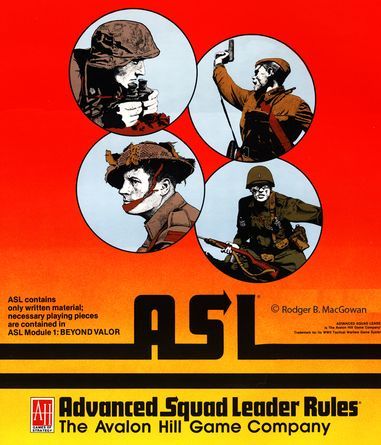
By Blaine Lee Pardoe
Having been a player and author in the gaming industry for well over three decades, I have seen numerous innovations that have emerged in wargaming. I make no claim that these are the most important breakthroughs, but merely some that have had a lasting impact on the games that we all love and play.
The following list of breakthroughs in board wargaming is far from all-encompassing but includes advances I have taken note of over the years. Also, I have made my best-effort to attribute the innovators; but comprehensive histories of games simply are few and far between, which means that there may be mistakes. A lot of small game companies have come and gone, especially in the early years, making verification of some of the material challenging.
As such, here is my suggested list:
NATO symbols for counters
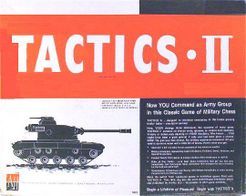
Avalon Hill’s Tactics/Tactics II was the first wargame that introduced the NATO symbols for unit designations. The NATO symbol set was a ground-breaking innovation that many publishers still utilize today. It introduced military symbols to a primarily civilian audience. Once understood, it provides players the ability to identify unit types across a variety of games. Despite being a military iconography, they became widely accepted and a mainstay in civilian gaming even now, something many of us take for granted.
Combat Results Table (CRT)
Prior to Combat Results Tables, combat tended to be resolved in the same manner as Risk – with simple dice-off resolutions. Dicing off rarely took into account the odds of the battle and, if they did, they abstracted them to the point of meaninglessness. We have all experienced attacking in Risk with 20 armies against three and losing.
CRT’s changed wargaming in that they forced players to look at overall odds in terms of attack and defense to determine combat resolution. Resolutions themselves could be varied depending on the game and the results. Always the trendsetter, Avalon Hill’s Tactics/Tactics II was the first published wargame that introduced this concept and altered wargame design and development from that point on.
Hexagon maps
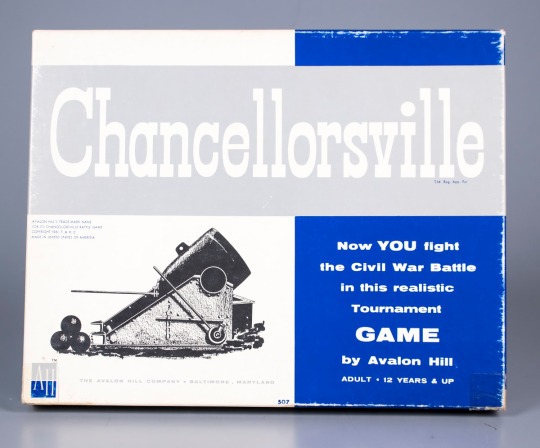
Hexes have long been a mainstay of wargaming. Rand Corporation began using hexes on maps for its games in the late 1950s, but these were not commercial products. Most early games used squares for terrain/movement. Hexagons changed everything. There are a number of contenders as to the first published game that utilized these, but the most widely accepted innovator in this category was Avalon Hill’s 1961 Chancellorsville game. Once Chancellorsville became a product, almost every other game designer defaulted to the use of hexes on their game maps.
Cards as part of combat resolution

Cards really first surfaced in board gaming with Risk (1957). The cards were not a factor of combat but rather the means of generating reinforcements. There was one game that used cards that impacted combat resolution, and that was the release of Kriegspiel by Avalon Hill in 1971. While not a wildly successful game, the tactical cards used added a new dimension to gameplay. Avalon Hill’s 1776 used a card tactics system, leading to other board games integrating cards into combat in the years that followed.
Geomorphic Maps

The introduction of geomorphic maps, or maps that can be reconfigured and used for a variety of scenarios, was a stunning innovation at the time. It allowed game developers to use a relatively small set of maps to create multiple scenarios, without having to create unique layouts. Jim Dunnigan’s Avalon Hill release of Panzerblitz in 1970 broke this ground. Games like Advanced Squad Leader have amped up this concept to a whole new level of variety and variance.
Quad Games
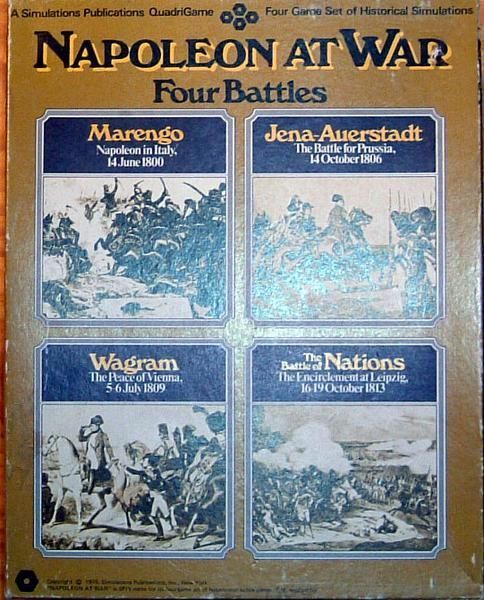
In 1975, SPI introduced a unique innovation in the industry with Napoleon At War Quad Game – the quad-game concept. Quad games had a standard set of rules, four unique maps, rules for the individual games (there were four in a pack – hence the ‘quad’), and counters for the four games. The games were not huge in scale but designed to be highly playable with players only having to learn one set of core rules and integrating minor modifications to those rules for specific battles.
On the surface, this may not seem like much of an innovation – but it ushered in a new era of game series for the wargaming industry. Wargaming companies could create a single set of core rules for a series of games. It reduced development time and costs since the companies could focus on the maps, counters, and variant rules for that particular game. Companies that have quad-games in their series can trace their origins to SPI for this innovation.
Games produced as part of a magazine
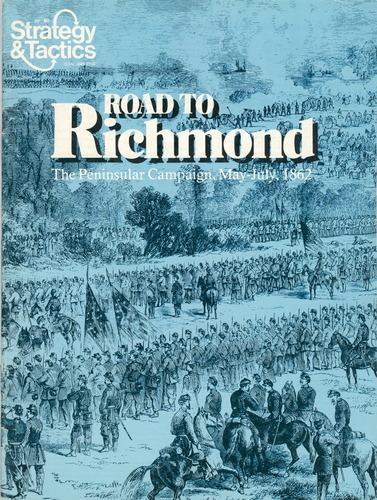
Strategy & Tactics, initially produced by SPI, was a game-changer (pun intended) in the wargaming industry. Starting in 1968 with issue 18, a game was provided as part of a historical magazine. These games were of almost equal quality to those produced by SPI at the time, sans the box and counter system. Some would go on to be published in box form.
With Strategy & Tactics, you got history articles about a subject and could then simulate it. The price was reasonable, allowing for a lot of gamers to subscribe. Many gamers got their initial fix on gaming with a copy of Strategy & Tactics, and it and a number of other companies leverage the same model today.
Dots in Hexes to Determine Line of Sight

Line of sight on hexagon-based wargames was always a bit of a challenge. Given hex sizes and the geographic features, it was sometimes a challenge to determine whether line of sight/line of fire was blocked. It often led to debates/arguments, some of which required involving the game designers.
Game designer John Hill tackled this issue head-on with the Avalon Hill 1977 release of Squad Leader. To resolve these conflicts, he placed a tiny dot in the center of the hexagon to be used to draw the line of sight. If anything touched the line, it was considered blocked. While this does not seem like a stunning innovation, many game companies have leveraged this idea over the years, and it has often brought an end to game table debates before they started.
Progressive Wargame Rules

Starting in the 1970’s, wargames started to explore the gap between realism and playability by becoming more complex. In doing so, it often became an onerous task to attempt to read, digest, and process increasingly thicker rulebooks.
Avalon Hill broke new ground in 1975 with their Tobruk: Tank Battles in North Africa by introducing a progressive set of rules. Players learned the core mechanics of the game and played a scenario that used those rules. They then would read more rules, learn more gameplay features, then play that scenario… and so on. Each scenario built off of the other, introducing more game mechanics until the players were prepared to play utilizing all of the game rules.
This teaching concept for game play allowed companies to introduce more complicated games in an easier to process format.
The Monster Game
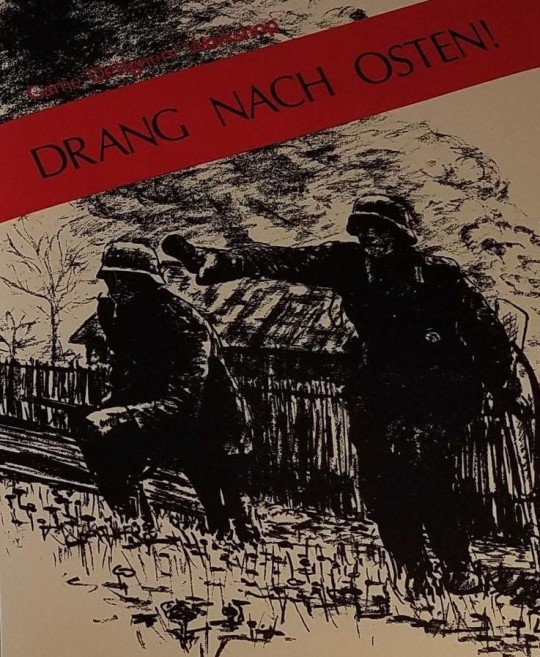
Attempting to qualify what constitutes a monster game can be challenging. Generally, it is a game that has a massive map and counter set and cannot be played in a signal session. Essentially, monster games are big, expensive, and require a significant commitment of time to play. GDW (Game Designers’ Workshop) broke new ground in 1973 with Drang nach Osten! It covered the eastern front of WWII and was staggering in terms of scale, with five 21”x27” maps, 1700+ counters, and a playing time that was easily well over 200 hours.
Other publishers hopped onto the bandwagon with SPI releasing War in the East a year later. Other monsters followed, including Terrible Swift Sword (Gettysburg), War in the Pacific, Campaign for North Africa, GDW’s Europa series, and Avalon Hill’s magnum opus, The Longest Day. While the price of these monster games has increased over the years, they are still a significant niche in the wargaming marketplace.
The Monster Game Runner Up – The Rules Monster

Not all game systems can be considered monsters because of the time to play them or their sheer bulk but by the staggering ruleset. The winner in this category is Advanced Squad Leader by Avalon Hill and Multiman Publishing. Introduced in 1985, this game was on the same tactical scale as the original squad leader – but with a staggeringly thick three-inch binder’s worth of rules. With supplemental releases added in, it is over 1,000 pages of rules. Advanced Squad Leader was not just a game, it was a commitment. The game has sold well over a million copies and remains in print in several forms even today.
So there you have it – my personal list of early breakthroughs – some big, some small, but all with some sort of impact on the games we enjoy playing.
--
At SJR Research, we specialize in creating compelling narratives and provide research to give your game the kind of details that engage your players and create a resonant world they want to spend time in. If you are interested in learning more about our gaming research services, you can browse SJR Research’s service on our site at SJR Research.
--
(This article is credited to Blaine L. Pardoe. Mr. Pardoe is a long-time gamer and has written material for numerous RPG’s and game systems over the years and is an award-winning author and historian. He is a New York Times bestselling author and has presented on historical subjects at the US Naval Academy, the US National Archives, and other prestigious venues.)
4 notes
·
View notes
Text
Tucson Next Travel Destination
Tucson is Arizona’s second-largest city which is surrounded by desert. It is a beautiful city set in the Sonoran Desert and surrounded by mountains says Brent Emerson. This city has many cultural desirabilities, historic sites, and natural areas to discover nearby. Some of the highlights include Saguaro National Park, Old Tucson Studios and Arizona Sonora Desert Museum, etc.
Nature lovers will discover magnificent hiking trails in this city and surrounding mountains and canyons. You can also go for day trips to nearby destinations like Tombstone and Bisbee. The climate is warm as well as arid. The desert, incredibly hardy plants, and mountains in this city are hard to find elsewhere.
Here are the reasons why you should consider Tucson as your next travel destination:
An intriguing Mixture of Cultures:
The inhabitants of Tucson is incredibly different with Mexican, Asian, and Native American influences. Sometimes it results in argument but at the same time makes this city more intriguing. The mixture of cultures affects Tucson’s atmosphere, architecture, and cuisine emphasis Brent Emerson Arizona. If you love eating, you will be happy to know traveling this city is a great place to have a taste of many diverse delights. Also, you can enjoy see different art and listen to a variety of music.
The Weather:
The arid dry air of a desert has many health benefits. You will also get a heavy dose of Vitamin D with so many sunny days around the year. Also, desert air help with migraines and asthma. The winter temperature hovers between 60 and 70 degrees and it goes up to 90 to 100 degrees in summer. Because of such hot temperatures, outside activities go year-round.
DeGrazia Gallery in the Sun:
With a stunning desert locale in the Catalina foothills, this gallery provides visitors the liberty to ramble its 10 saguaro-studded acres at your speed. You will also discover gorgeous mosaics, an open-air task with rock floors and bright murals and an adobe gallery Brent Emerson says.
Saguaro National Park:
The Park is split into two different parks, one on the Eastside and the other on the West side of Tucson. There are also picnic areas, nature trails hiking, and a tourist center with exhibits. In the park west, make the simple hike up to Signal Hill to perceive rock carvings and striking views. If you are planning to go during hours of peak heat, do not forget to bring protective clothing, sunscreen, and water. The best time is to go in the morning or around sunset, as the lighting and view are spectacular during this time.
Colorful Downtown:
Tucson is not only for historic place lovers but also a stunning place to wander about. You can also see a walled fortress “the Presidio San Austin de Tuscon” built by the Spanish back in the 17th century. There is a residence made of sun-dried bricks says, Brent Emerson. Most of the houses are gorgeously painted in bright colors. Downtown is also a perfect destination for the party as there are several bars and pubs.
Arizona Sonora Desert Museum:
It is ranked as the top museum in the U.S. This desert museum is spread in 100 acres area and many museums are outdoors. You can find animals, a botanical garden, plants, and walking paths there. There are also several traditional museum items like natural history display and an art gallery. You can experience different species of birds and the aquarium. The Arizona Sonora desert museum is a must-see attraction when you visit Tucson.
Bottom lines
A trip to Tucson means exploring the natural beauty of national parks and pine forests, unplugging in open-air museums and gardens. This city is also rife with surprises says, Brent Emerson Arizona. From bizarre wildlife to uncannily shiny skies to delectable beer and culinary offerings, you can have fun. The landscape collective with hot weather and cultural diversity makes Tuscon moderately an exotic place.
Originally Posted: https://brentemersonarizona.wordpress.com/2021/02/04/tucson-next-travel-destination/
1 note
·
View note
Text
January 9, 2020
This morning we were picked up in the lobby of our hotel by Ivy, our tour guide for the day. Our hotel is very close to Tiananmen Square, so we walked to our first destination on our tour. Tiananmen Square is a city square in the centre of Beijing, China, named after the Tiananmen ('Gate of Heavenly Peace') located to its north, separating it from the Forbidden City. The square contains the Monument to the People's Heroes, the Great Hall of the People, the National Museum of China, and the Mausoleum of Mao Zedong. Mao Zedong proclaimed the founding of the People's Republic of China in the square on October 1, 1949; the anniversary of this event is still observed there. Tiananmen Square is within the top ten largest city squares in the world (440,500 m2 – 880×500 m or 109 acres – 960×550 yd). It has great cultural significance as it was the site of several important events in Chinese history.
Next we crossed the street to the Forbidden City. The Forbidden City is a palace complex in central Beijing, China. It houses the Palace Museum, and was the former Chinese imperial palace from the Ming dynasty to the end of the Qing dynasty (the years 1420 to 1912). The Forbidden City served as the home of emperors and their households and was the ceremonial and political center of Chinese government for almost 500 years. Constructed from 1406 to 1420, the complex consists of 980 buildings and covers 72 hectares (over 180 acres). The palace exemplifies traditional Chinese palatial architecture, and has influenced cultural and architectural developments in East Asia and elsewhere. The Forbidden City was declared a World Heritage Site in 1987, and is listed by UNESCO as the largest collection of preserved ancient wooden structures in the world.
Since 1925, the Forbidden City has been under the charge of the Palace Museum, whose extensive collection of artwork and artifacts were built upon the imperial collections of the Ming and Qing dynasties. Part of the museum's former collection is now in the National Palace Museum in Taipei. Both museums descend from the same institution, but were split after the Chinese Civil War. Since 2012, the Forbidden City has seen an average of 14 million visitors annually, and received more than 16 million visitors in 2016 and 2017.
Our driver picked us up at the gate of the Forbidden City, and drove us 1 1/2 hours outside of downtown Beijing to the Great Wall of China.
The Great Wall of China is the collective name of a series of fortification systems generally built across the historical northern borders of China to protect and consolidate territories of Chinese states and empires against various nomadic groups of the steppe and their polities. Several walls were being built from as early as the 7th century BC by ancient Chinese states; selective stretches were later joined together by Qin Shi Huang (220–206 BC), the first Emperor of China. Little of the Qin wall remains. Later on, many successive dynasties have built and maintained multiple stretches of border walls. The most well-known sections of the wall were built by the Ming dynasty (1368–1644). Apart from defense, other purposes of the Great Wall have included border controls, allowing the imposition of duties on goods transported along the Silk Road, regulation or encouragement of trade and the control of immigration and emigration. Furthermore, the defensive characteristics of the Great Wall were enhanced by the construction of watch towers, troop barracks, garrison stations, signaling capabilities through the means of smoke or fire, and the fact that the path of the Great Wall also served as a transportation corridor.
The frontier walls built by different dynasties have multiple courses. Collectively, they stretch from Liaodong in the east to Lop Lake in the west, from the present-day Sino–Russian border in the north to Taohe River in the south; along an arc that roughly delineates the edge of Mongolian steppe. A comprehensive archaeological survey, using advanced technologies, has concluded that the walls built by the Ming dynasty measure 8,850 km (5,500 mi). This is made up of 6,259 km (3,889 mi) sections of actual wall, 359 km (223 mi) of trenches and 2,232 km (1,387 mi) of natural defensive barriers such as hills and rivers. Another archaeological survey found that the entire wall with all of its branches measures out to be 21,196 km (13,171 mi). Today, the defensive system of the Great Wall is generally recognized as one of the most impressive architectural feats in history.
We visited the Mutianyu section of the Great Wall of China located in Huairou District within the city limits of Beijing 70 kilometres (43 mi) northeast of the center of the city. The Mutianyu section of the Great Wall is connected with Jiankou in the west and Lianhuachi in the east. As one of the best-preserved parts of the Great Wall, the Mutianyu section of the Great Wall used to serve as the northern barrier defending the capital and the imperial tombs.
Built mainly with granite, the wall is 7 to 8.5 metres (23 to 28 ft) high and the top is 4 to 5 metres (13 to 16 ft) metres wide. Compared with other sections of Great Wall, Mutianyu Great Wall possesses unique characteristics in its construction.
Watchtowers are densely placed along this section of the Great Wall - 22 watchtowers on this 2,250-metre (7,380 ft) stretch.
Both the outer and inner parapets are crenelated with merlons, so that shots could be fired at the enemy on both sides - a feature very rare on other parts of the Great Wall.
The Mutianyu Pass consists of three watchtowers, one big in the centre and two smaller on both sides. Standing on the same terrace, the three watchtowers are connected to each other inside and compose a rarely seen structure among all sections of Great Wall. One of the side watchtowers has two graffiti canvases which are replaced regularly.
Besides, this section of Great Wall is surrounded by woodland and streams. The forest-coverage rate is over 90 percent.
Today, this section of wall is open to visitors. There are three methods of ascent and four methods of descent to choose from. Besides utilizing 4000+ steps, visitors may also choose between a two-rider chairlift or four-rider gondola lift up from the foothills to the level of the wall, which runs along the ridges above. These lifts may also be used to descend. Another feature of the wall at Mutianyu is an alternate method of descent by single-rider personal wheeled toboggan. This allows single riders to descend from the wall to the valley on a winding metal track.
Seeing the Great Wall was definitely a bucket list item for us! We hiked as far as we were allowed to go. We were most surprised by the fact that they built this wall along the peaks of these mountains. So many stair climbs and descents make it hard to believe they were ever able to build it. The most memorable part of our day will be that we asked our guide if we could take the toboggan ride down from the wall, and she informed us that no one over 60 years old was allowed to ride the toboggan because it was too dangerous!!!! We couldn’t believe it! This is the first time we have been told we were too old to do something! We didn’t like that!!!! We all laughed so hard! Our guide Ivy was so much fun! We enjoyed hearing about her family and her life in China. It was a wonderful day of learning and seeing places that we had always wanted to visit! It was a beautiful, cold, sunny day. Our guide explained that it is the best time to visit the wall because there are no crowds. During the summer it is very crowded and long waits, so we just ignored the cold and enjoyed our day!
2 notes
·
View notes
Photo

#TBT to shooting on Signal Hill in St. John's, Newfoundland; when the world was a song, and the song was exciting... #ShaunSimpsonPhotography #Halifax #Canon #NovaScotia #EastCoast #Canada #Landscape #Forest #Nature #EarthPix #LandscapePhotography #Summer #Hiking #Zen #Green #GoldenHour #Sunset #Sunrise #Blossoms #Flowers #Trees #Harbour #Newfoundland #SignalHill #StJohns (at Signal Hill National Historic Site) https://www.instagram.com/p/Bnrt4svHihc/?utm_source=ig_tumblr_share&igshid=61wulb3bmj9m
#tbt#shaunsimpsonphotography#halifax#canon#novascotia#eastcoast#canada#landscape#forest#nature#earthpix#landscapephotography#summer#hiking#zen#green#goldenhour#sunset#sunrise#blossoms#flowers#trees#harbour#newfoundland#signalhill#stjohns
7 notes
·
View notes
Text
Man in eastern Newfoundland arrested for pulling down disputed floodlights: police
A man in Newfoundland has been arrested for damaging floodlights at the centre of a dispute in a historic fishing village on the St. John's waterfront.
The Royal Newfoundland Constabulary says officers responded to a report of vandalism last night at 1:20 a.m., and a 32-year-old suspect was later charged with trespassing and causing property damage in the Outer Battery.
Neighbours have complained the lights shine all night into the bedrooms of local homes and can be seen from across the harbour.
The lights were mounted on a shed last spring by resident Colin Way.
Earlier this week, St. John's city council rejected a motion seeking a "nuisance lighting" bylaw, though a few councillors have urged Way to remove the lights.
One councillor has said the municipality doesn't have the power to legislate good neighbours.
Court documents show Way was charged earlier this year with one count of extortion and two counts of mischief by interfering with use of property.
His lawyer, Bob Buckingham, says one mischief charge is related to the lights, and the others are related to other disputes in the same neighbourhood.
Way has declined to comment as the matter is before the courts.
The dispute has inspired a song and many online memes, including photos that purport to show that the lights can be seen from space.
The neighbourhood is perched in a cliff face near the entrance to the harbour, and its colourful homes and fishing stages are often featured in the city's tourism ads.
The neighbourhood's main road leads to the start of a popular hiking trail that climbs around the back of Signal Hill, a national historic site.
This report by The Canadian Press was first published Jan. 20, 2023.
from CTV News - Atlantic https://ift.tt/ZRhz2m1
0 notes
Photo

Mr. Raccoon enjoying the beautiful views at Signal Hill. I can't get over how pretty it is here.😍 . . . . #mrraccoonsadventures #cabottower #signalhill #stjohns #newfoundland #explorecanada🍁 #raccoonsofinstagram #wildwhimsywoolies (at Signal Hill National Historic Site) https://www.instagram.com/p/BnhuQQtnZ8j/?utm_source=ig_tumblr_share&igshid=14fz8tb5zf5l5
#mrraccoonsadventures#cabottower#signalhill#stjohns#newfoundland#explorecanada🍁#raccoonsofinstagram#wildwhimsywoolies
5 notes
·
View notes